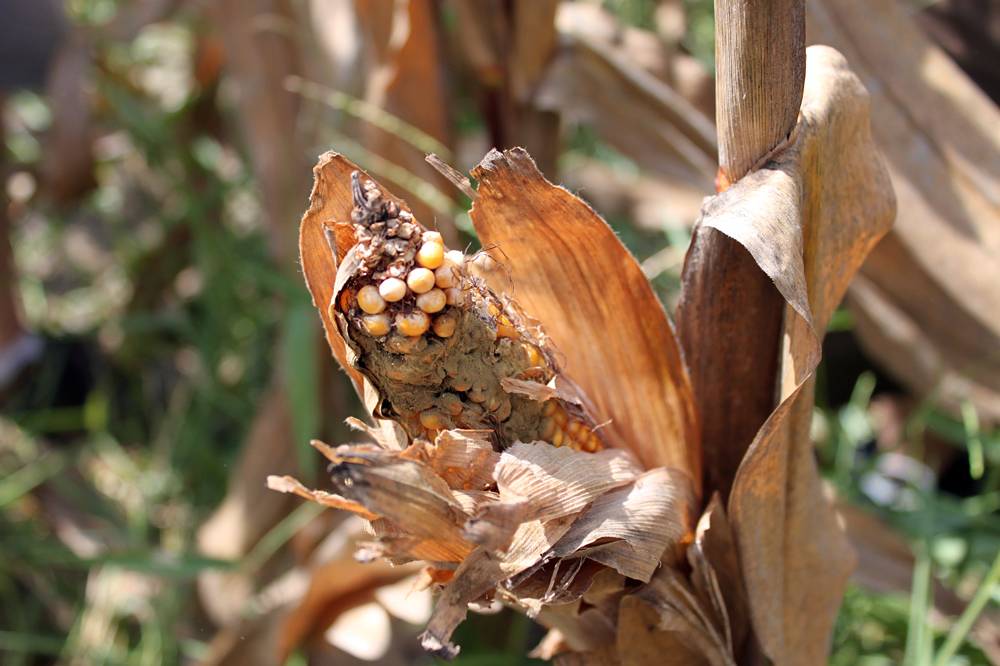 |
| Aspergillus Ear Rot (Purdue University/Woloshuk) |
News, Updates, and Announcements from the Purdue Extension Service of Spencer County

Tuesday, September 18, 2012
New Aspergillus Ear Rot Brochure
Weekly Outlook - Early Corn Harvest and September 1 Stocks
A larger percentage of the U.S. corn grain acreage was harvested in August this year than is typically the case. The availability of large new crop corn supplies during the last month of the previous marketing year makes it more difficult to anticipate the magnitude of old crop stocks on September 1.
According to the USDA’s weekly Crop Progress report, 6 percent of the corn acreage in the 18 major producing states was harvested as of August 26 and 10 percent was harvested as of September 2, implying about 9 percent of the acreage was harvested by the end of August. Harvest progress by the end of August last year, and the average for the previous 5 years, was about 2.5 percent. If the average yield of the harvested acreage this year was near the average of 122.8 bushels forecast for the U.S, then about 965 million bushels were likely harvested in August, compared to about 310 million bushels likely harvested in August last year. <Read More>
In the Grow - Q & A
 Q. We have had the pictured vine above our sink since 1977. It has never
bloomed in all that time - until this spring. It bloomed for the very first
time. We don't know the name of the vine and would like to know. Our daughter
told us it is a common vine. What can you tell us?
Q. We have had the pictured vine above our sink since 1977. It has never
bloomed in all that time - until this spring. It bloomed for the very first
time. We don't know the name of the vine and would like to know. Our daughter
told us it is a common vine. What can you tell us? A. Wax plant, known botanically as Hoya carnosa, is a popular, easy-to-grow houseplant. This vigorous, twining vine may take years before it is mature enough to bloom, but once it does, it often continues blooming for months. Wax plant performs best in bright light with a well-drained soil mix that is allowed to dry a bit between waterings. This species seems to prefer being a bit pot-bound, so don't be in too much of a hurry to repot, even if it seems overgrown for its container.
Q. I have a question about cedar and bark and any wood chips for mulch. Will these chips attract termites?
A. Mulch of any kind can create a stable, moist habitat favorable to termites, so if termites are already in the area, or happen to wander into the area, you might see them in or under the mulch while they forage. <Read More>
Subscribe to:
Posts (Atom)